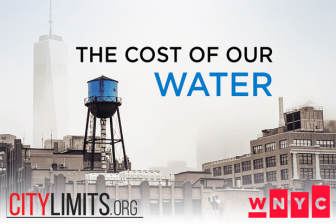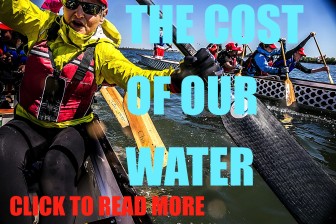
Austin512
Gilboa Dam on the edge of the Schoharie Reservoir. As the city bought up land around reservoirs and streams in the Catskills, preventing any development from taking place there, the eagles thrived.
Everything the city does in the watershed is to protect New York City’s drinking water and supply it to the city. But its actions have had unintended natural consequences. Historically known as black bear, bobcat and beaver country, the Catskills have become popular for trout fishing and bald eagle spotting, due in part because of how we get our drinking water.
Earlier this year, two eagles were spotted nesting on Staten Island, marking the first time in 100 years bald eagles were nesting in New York City. But on city-owned land upstate, eagles have been thriving.

All this week, a joint City Limits-WNYC reporting partnership will broadcast and publish stories about New York City's incredible water system and the challenges it faces.
In 1976, there was only one pair of nesting bald eagles left in New York State, according to the Department of Environmental Conservation. DDT wiped out the eagle population all over the country, so after it was banned the state brought bald eagles from other states in the 70s and 80s. The biggest threat to them, according to the DEC, was the destruction of their habitat. They like to nest in heavily wooded areas near water.
So as the city bought up land around reservoirs and streams in the Catskills, preventing any development from taking place there, the eagles thrived.
“It’s the perfect habitat for them. You’ve got the high trees, you’ve got the high mountains, they have obviously abundant fishing territory, they can swoop down into the reservoirs or just below the reservoirs and grab bass and trout,” says DEP’s watershed spokesman Adam Bosch.
According to the DEP, 30 pairs of bald eagles are nesting on city-owned land near its reservoirs in the Catskills. In 2010, the DEC reported 173 breeding pairs in the state.
That number is going up and the DEP is taking some of the credit.
“Not only are they surviving, they’re thriving. We’ve had dozens of fledglings hatch and successfully take flight from our reservoirs in the past four or five years,” said Bosch.
Trout, meanwhile, love cold water. So anglers looking for trout are always on the lookout for cold, cold water. The best place to fish for trout in New York State — and depending on who you ask, the East Coast—is below city-owned reservoirs in the Catskills. The great fishing is an unforeseen natural consequence of the city using drinking water from the Pepacton and Cannonsville reservoirs.
In the 1920s and 30s, Pennsylvania, New Jersey and New York were battling for Delaware River water. In 1954 the Supreme Court had to step in and order the states to share. So since then, New York City has only been allowed to take a certain amount of drinking water from its reservoirs along the Delaware River. The Pepacton was finished in 1955, followed by the Cannonsville in 1964. Because the city is only allowed to send a certain amount south to New York City taps, the rest is released to streams south of the reservoirs, which eventually feed into the Delaware River.
Rather than letting warm surface water spill over the sides of the reservoirs, the city releases cold water from the bottom. And what’s been going on in that cold water? Trout have been breeding.
In the half century after the creation of those reservoirs, the trout fishing there has become world-renowned. Roscoe, N.Y., better known as Trout City, U.S.A., always places on lists of top trout fishing towns in America. This collateral impact is one way the city’s water system boosts upstate economies because anglers from all over the world travel to the area for the trout.
There are some problems with this, however. The DEP is literally holding a release switch that will determine how good or bad the trout fishing will be on any given day.
“Sometimes the fishermen don’t think we give them enough cold water. Operating the system is a balancing act. There’s a lot of conflicting interests,” says DEP’s Bosch. “It’s tough. During really warm, dry summers, late in August, sometimes the fisherman wants additional water. And we understand that.
Follow all City Limits’ investigations on issues facing New York. Get our Free Newsletter!









